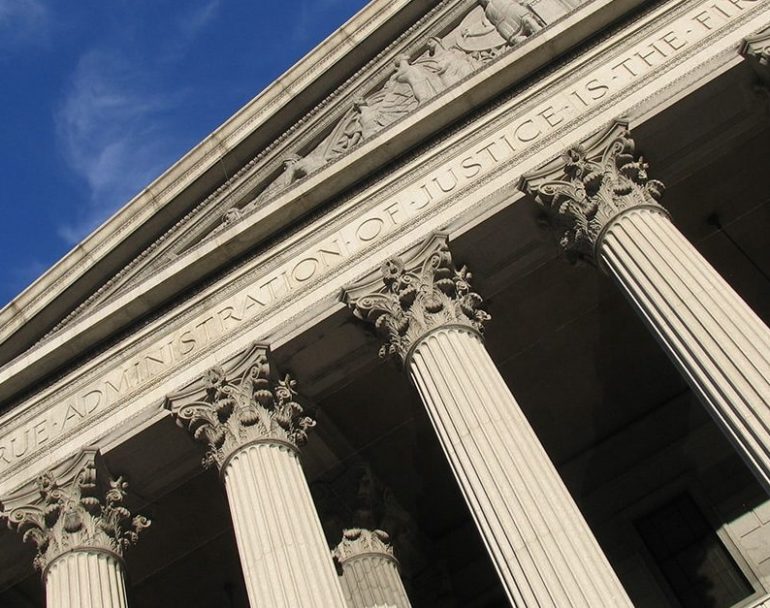
Dueling Originalists (and Justice Thomas on Stare Decisis) in Gamble v. United States
By: Michael D. Ramsey
The Supreme Court’s decision Monday in Gamble v. United States confirms the validity of the “dual sovereigns” doctrine: that successive prosecutions in state and federal court for the same conduct do not violate the Constitution’s double jeopardy clause because the clause only bars successive prosecutions by the same government.
The majority, by Justice Alito, and Justice Gorsuch’s dissent are both strongly textualist and originalist, covering much of the same ground but drawing different conclusions on the original meaning of the clause. Both seem to acknowledge that the evidence cuts both ways; for the majority, it seems, the main point is that the evidence is not strong enough to overcome existing Court precedent endorsing the doctrine.
Commentators may say that Gamble‘s outcome is problematic for originalism, but I think not. Contrary to caricatures, originalism does not contend that there are always clear answers. Sometimes, perhaps often, the textual and historical evidence will point in different directions. That does not defeat originalism as a theory, because originalism at minimum only says that when the textual and historical historical evidence provides clear direction, they should be followed.
But nonetheless practical originalists need a way to approach a situation in which the textual and historical evidence does point in different directions. The majority and especially Justice Thomas’ concurrence point to part of the solution. The majority says, not that Gamble’s historical evidence carried no weight, but that it did not carry enough weight to justify overruling prior decisions.
Thomas’ long concurrence is particularly significant. Thomas begins: “I agree that the historical record does not bear out my initial skepticism of the dual-sovereignty doctrine.” This in itself is a wise and appropriate position for an originalist. One may have intuitions about the correct historical meaning of a clause, but without full investigation one cannot be sure, and often full investigation will lead to a different conclusion; it is surely appropriate to recognize and indeed celebrate this.
He makes the further point that successive state and federal prosecutions likely were not seen as a pressing problem in the founding era because relatively little overlap was anticipated:
As the Court suggests, Congress is responsible for the proliferation of duplicative prosecutions for the same offenses by the States and the Federal Government. By legislating beyond its limited powers, Congress has taken from the People authority that they never gave. … And the Court has been complicit by blessing this questionable expansion of the Commerce Clause. … Indeed, it seems possible that much of Title 18, among other parts of the U. S. Code, is premised on the Court’s incorrect interpretation of the Commerce Clause and is thus an incursion into the States’ general criminal jurisdiction and an imposition on the People’s liberty.
But he’s just getting started: most of the concurrence addresses the Court use of stare decisis, and he advances the proposition that the Court should not and indeed constitutionally cannot give stare decisis effect to what the calls “demonstrably erroneous precedent” (taking the phrase from Caleb Nelson’s article Stare Decisis and Demonstrably Erroneous Precedents, 87 Va. L. Rev. 1 (2001)). Thomas concludes:
In sum, my view of stare decisis requires adherence to decisions made by the People—that is, to the original understanding of the relevant legal text—which may not align with decisions made by the Court. … Thus, no “special justification” is needed for a federal court to depart from its own, demonstrably erroneous precedent. Considerations beyond the correct legal meaning, including reliance, workability, and whether a precedent “has become well embedded in national culture,” S. Breyer, Making our Democracy Work: A Judge’s View 152 (2010), are inapposite. In our constitutional structure, our role of upholding the law’s original meaning is reason enough to correct course.
To this strong view he adds two important reservations. First:
I am not suggesting that the Court must independently assure itself that each precedent relied on in every opinion is correct as a matter of original understanding. We may, consistent with our constitutional duty and the Judiciary’s historical practice, proceed on the understanding that our predecessors properly discharged their constitutional role until we have reason to think otherwise—as, for example, when a party raises the issue or a previous opinion persuasively critiques the disputed precedent.
And second:
Although precedent does not supersede the original meaning of a legal text, it may remain relevant when it is not demonstrably erroneous. … Written laws “have a range of indeterminacy,” and reasonable people may therefore arrive at different conclusions about the original meaning of a legal text after employing all relevant tools of interpretation. It is within that range of permissible interpretations that precedent is relevant. … Of course, a subsequent court may nonetheless conclude that an incorrect precedent should be abandoned, even if the precedent might fall within the range of permissible interpretations. But nothing in the Constitution requires courts to take that step.
This is a powerful and important opinion that can’t effectively be summarized in a few quotes. I expect it will generate much commentary.
NOTE: This post was originally published at The Originalism Blog, “The Blog of the Center for the Study of Constitutional Originalism at the University of San Diego School of Law,” and is reposted here with permission from the author.